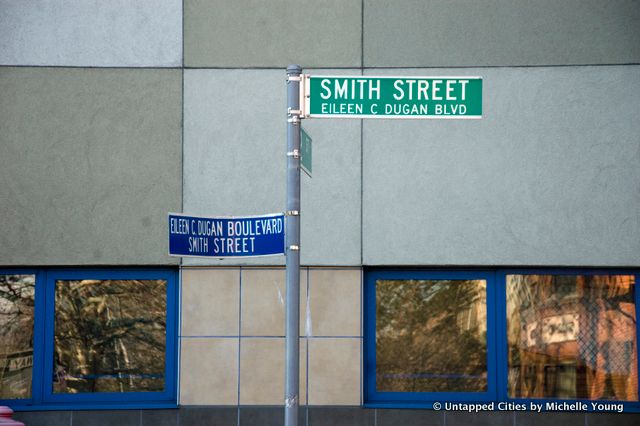NYC’s Forgotten ‘War on Christmas Trees’
Discover how an obscure holiday crackdown affects festive street vendors today!

In New York City, street name signs account for only 19% of the millions of signage in the five boroughs. In 1793, systematic house numbering and street signs, known as “direction boards” for horsecars, were introduced to “rationalize [New York] City’s built environment.” Other early street signs in New York were hand-chiseled onto the corners of buildings, like in Paris. In Paris, historic preservation sensibilities have led to the retention of earlier inscription designs, now incorporated into laser cut plaques. These new signs are placed above or around the old chiseled signs, leading to a visual documentation of the history of street names. Today, the increasingly rare chiseled signs in New York also capture the evolution of street names here, such as the renaming of Macomb Street in Brooklyn to Garfield Place in 1883 following James President Garfield’s assassination.
Vintage photographs of New York City show that ornate 19th century Victorian street signs and posts were replaced by more modern-day rectangular street signage by the 1910s. Street signage in New York City today is an amalgamation of modern-day standardization and references to historical styles. A few of the signs from the 1960s and 1970s remain, but the majority are the recognizable green and white signs inspired by the color of U.S. highways signs. Any green signs with a Statue of Liberty date from the 1986 anniversary.
The larger blue street signs are a reference to the “humpback” style of signage that date from the 1910s to the 1930s. The brown signage was introduced in 1989 to demarcate historic districts on the 25th anniversary of the Landmarks Law. Only streets within official historic districts can have the brown signage, whose terracotta color was designed to blend nicely with New York’s limestone and brownstone buildings. A secondary sign can be added to reference street nicknames or tributes, like Fashion Avenue, Marathon Walk, Big Brothers and Big Sisters Way or Juan Pablo Duarte Boulevard on St. Nicholas Avenue.


The New York City Department of Transportation offers custom made signs as gifts, and has a nice roundup of historical signs from the 1970s showing different color combinations by borough (blue on white for Queens, white on blue for the Bronx, green on yellow for Staten Island and Manhattan, white on green for Brooklyn).
In 2010, New Yorkers were given a rude awakening by the Federal Highway Administration, requiring all street signs to be switched to lowercase for safety and readability reasons. The cost of replacing the signage was estimated at $27.6 million for the 250,000+ signs. While much of the resident anger was directed at the cost of the change, I can’t help wondering if some of the concern was our attachment to a look that has been standard for the last fifty years. Even the font is changing from Highway Gothic to a condensed version of Clearview. The deadline for change is in 2018, so for the next few years you’ll see a mix of styles throughout the city.
All of this is giving the New York City DOT Sign Shop, a 22-person team in Maspeth, Queens, plenty of work for the next few years. Ever wonder what goes into the making of the city’s signage? In this behind-the-scenes video, filmmaker and photographer Robert Hooman takes us into the DOT Sign Shop warehouse.
https://vimeo.com/56132727
Subscribe to our newsletter